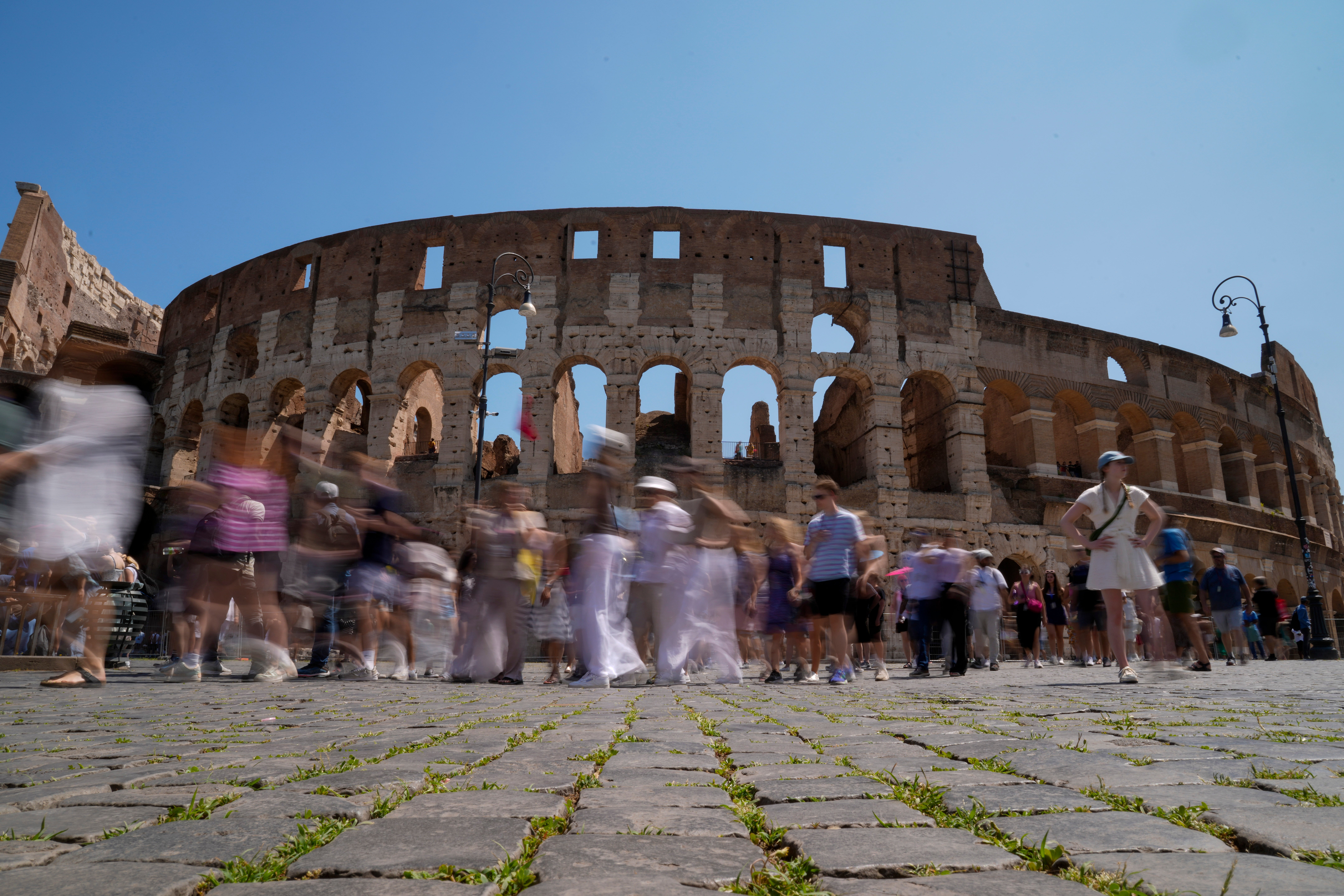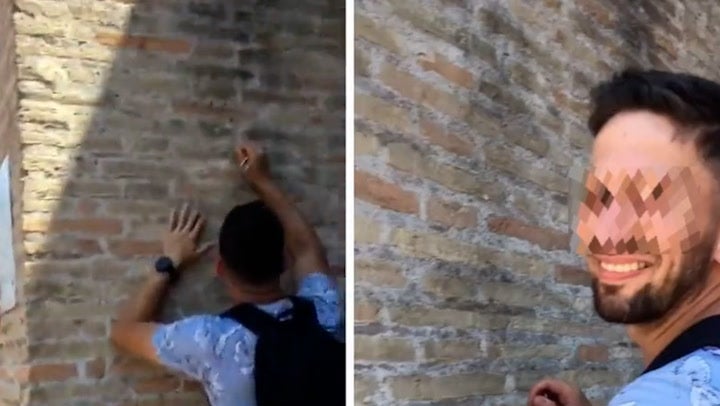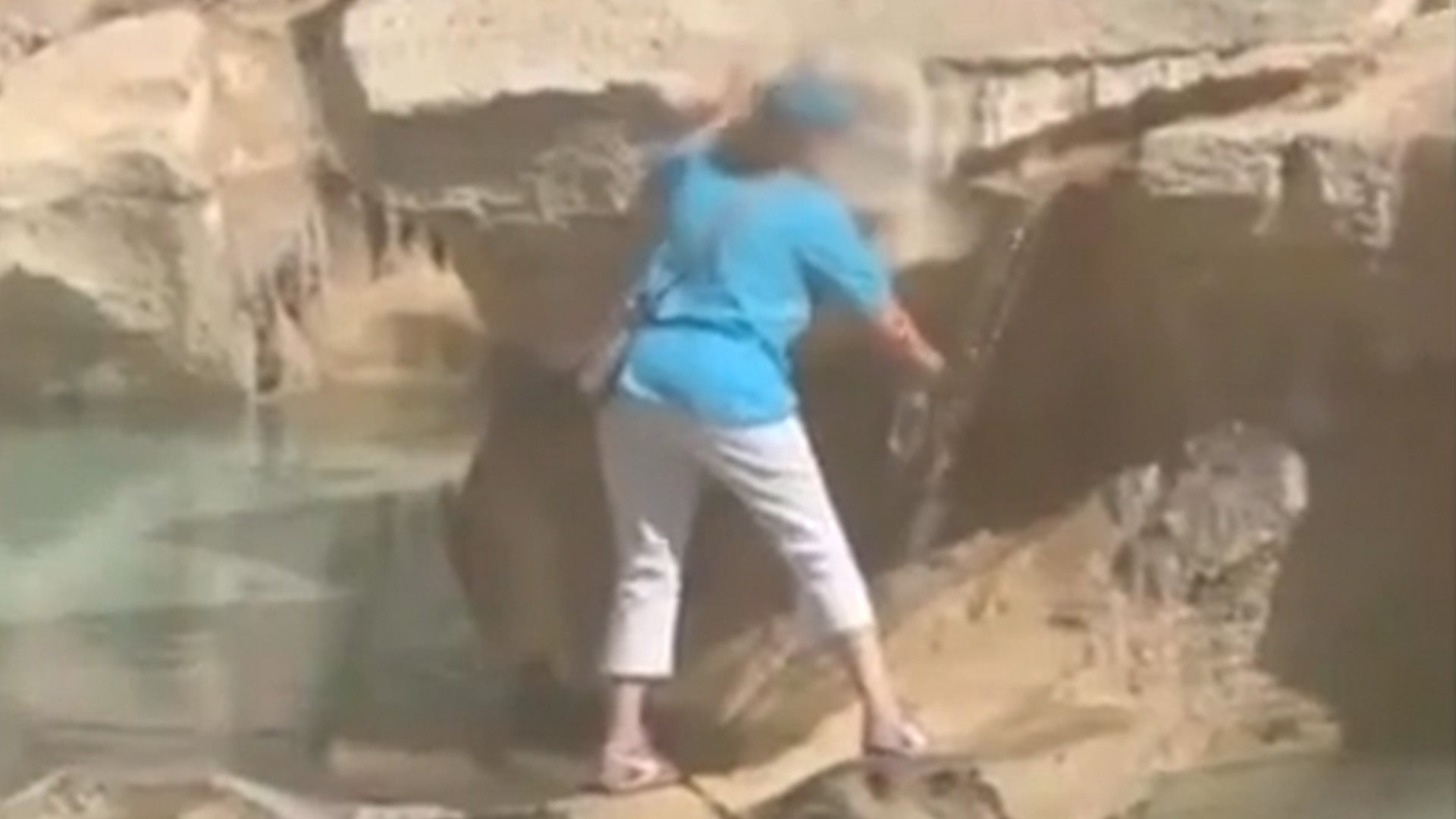Summer of shame: is social media to blame or have we always been brats abroad?
They came, they saw, they... dived into canals and scrawled on ancient monuments. Instagram and TikTok have showcased a summer of scandalous behaviour from holidaymakers visiting Italy – but authorities are too busy cashing in to stop it, reports Catherine Bennett

The gap between what tourists imagine Italy to be and the reality can sometimes seem more like a chasm. Exhibit A: the indignant TikTok of a woman who had travelled to the Amalfi coast only to find that the beautiful, clifftop villages didn’t have luggage service or lifts. She was ridiculed online, but it was a perfect illustration of the fallacy of social media, which only highlights the best aspects of a destination, without its rough edges.
Many Venice residents have an amusing anecdote about the questions they’ve been asked by tourists, like “Where’s the exit?” or “What time does Venice close?” An Italian journalist recounted how a tourist asked them where the city was – while they were standing in the middle of the Campo San Polo, an enormous square just minutes from the Rialto Bridge. The tourist couldn’t believe that this bustling, living city was the mythical Atlantis sunk beneath the waves that they expected to find.
It’s a vicious cycle that’s repeated across Europe: visitors go to Rome or Dubrovnik and take their idyllic, pastel-hued photos; people see these sanitised photos online and decide to go, without understanding what it’s really like.

Monica Cesarato, a leader of food tours and author of new Venetian food guide Andar per Bacari, says that she’s noticed a change in the way people travel – and can even put a date on it. “It started in 2014, when we started having low-cost flights and low-cost cruises. People don’t do any research before travelling anymore. They just find cheap flights, cheap accommodation and jump in and come.” For Cesarato, this impulsive style of travelling, reinforced by the way social media over-simplifies (and even erases key aspects of) destinations, is connected to the spate of incidents of bad tourist behaviour in Italy this summer.
“Venice is a city on water, so people think automatically that it’s a beach resort. People sunbathe in the middle of the city – they take their clothes off and lie down on the pavement! Do they not see that no one else is doing it?” asks Cesarato. In July, a man dive-bombed into a Venice canal from a bridge, narrowly missing a gondola passing underneath. A local newspaper headline lamented that the number of incidents of tourists diving into or swimming in the city’s canals was “endless.” It’s dangerous for residents and, although they don’t seem to realise this, for the swimmers too: Venetian canals double as the city’s plumbing system, so tourists shouldn’t be too surprised to see faecal matter floating past as they show off their front crawl.
It’s not just in Venice. The whole of Italy is suffering from what’s been dubbed ‘the summer of bad tourists’: there was the British man who carved his and his girlfriend’s name into the crumbling walls of the more than 1,900-year-old Colosseum in Rome, the French tourist who etched a heart into the Leaning Tower of Pisa, and the German tourists who toppled a 150-year-old statue in a villa in Lombardy when they were trying to take a photo with it.
People don’t do any research before travelling anymore. They just find cheap flights, cheap accommodation and jump in and come
So why has Italy been particularly badly affected by naughty tourists? French geographer Rémy Knafou, who wrote a book on overtourism titled Réinventer (Vraiment) le Tourisme, says that it’s simply a numbers game. “It makes sense that with the number of tourists increasing, incidents of bad behaviour are increasing as well. In all honesty, I’m surprised by how few cases of damaged property there are, considering the high tourist numbers.” And Italy is having a bumper year when it comes to tourism: the country’s national tourism agency reported in June that almost two million visitors were expected to come to Italy over the summer period, 84 per cent of whom are foreign. Bookings outperformed the last pre-Covid year, 2019, and numbers of international arrivals in the first quarter of 2023 far outstripped 2022, spiking by 86 per cent.
Italy’s tourism minister, Daniela Santanchè, has called for tourism to become the country’s “top industry” – and it’s well on its way. But Italy’s creaking infrastructure isn’t made to welcome all of these people, putting valuable heritage at risk.
“You have these historical centres that are essentially open-air museums,” explains Antonio Pezzano, a tourism expert. “You’ll have a piece of art that you can sit on. It’s a more fragile environment.” And the problem with very modern tourists rampaging through very ancient streets is that the setting makes it harder to manage them.

“Disneyland you can manage because you can easily close streets and organise flows of people,” says Pezzano. “You can’t do that in a real city.” Authorities across Italy are driving tourists – and their cash – towards popular destinations, without ensuring that there’s the infrastructure to match. Take other examples of bad behaviour, like littering. “This happens a lot in Rome because the rubbish system doesn’t work, even for residents,” continues Pezzano. “They let city centres become catered to tourists – all restaurants and hotels – but don’t change services accordingly.”
The Instagram account Venezia Non È Disneyland (Venice is not Disneyland) anonymously shames visitors for bad behaviour, posting photos of them with their faces blurred. Having canal-side picnics, riding bicycles, being topless in the sun, even sitting down on steps are all forbidden in La Serenissima – although most tourists are unaware of many of the city’s arcane rules. And how could they? The local government is desperately trying to rake in tourists without concern for how it affects residents’ lives – which means the city does increasingly feel like a theme park. Tourists who go there are rinsed of money: there are precious few parks or benches to sit down in or on and very few good, cheap food options, which drives visitors towards expensive restaurants; they pay €9.50 for a vaporetto ride where residents pay €1.50, and the number of beds available for tourists are now almost on a par with the number of beds for residents. If it walks like Disneyland and talks like Disneyland, who can blame tourists for treating it like Disneyland?
Disneyland you can manage because you can easily close streets and organise flows of people; you can’t do that in a real city
Italian authorities are burying their heads in the sand about the inevitable damage to the country’s tangible heritage if tourists continue to sweep into the country in such large numbers. After all, people have always done stupid things; it’s only because of social media that it’s more visible. In 1810, the English poet Lord Byron carved his name on one of the columns at the Temple of Poseidon in Sounion in Greece, and curious tourists seek out his graffiti today. But Greece is making a concerted effort to make sure that activity remains firmly in the past. “At the Acropolis in Athens, I noticed that guards stopped tourists even from picking up the tiniest rock,” says Knafou. “So far, Italy has said that it will increase fines, but the law in Peru is much harsher, handing out punishments of at least four years in prison for anyone who damages national cultural heritage.”
After this summer of cultural vandalism, Italy is finally ratcheting up its response; the government will soon pass the so-called eco-vandalism law, which means anyone defacing or damaging a “cultural asset” could face fines of between €10,000 and €60,000. Although thoughtless tourists could also be hit by the law, it was actually designed to crack down on environmental protesters drawing attention to the climate crisis through actions like dying the water in Rome’s Barcaccia fountain black or spraying Florence’s Palazzo Vecchio with orange paint. Two birds, one stone.
The difference is that activists usually don’t permanently damage monuments with their actions, unlike tourists – but tourists bring in money, so it’s clear who the bad guy is here in the eyes of the Italian government. If Italy shifted its focus to creating a better experience for visitors and residents, adapting infrastructure and services to meet the rising demands of tourism, and less time penalising climate activists, they’d perhaps protect the country’s heritage far more effectively.






Join our commenting forum
Join thought-provoking conversations, follow other Independent readers and see their replies
Comments